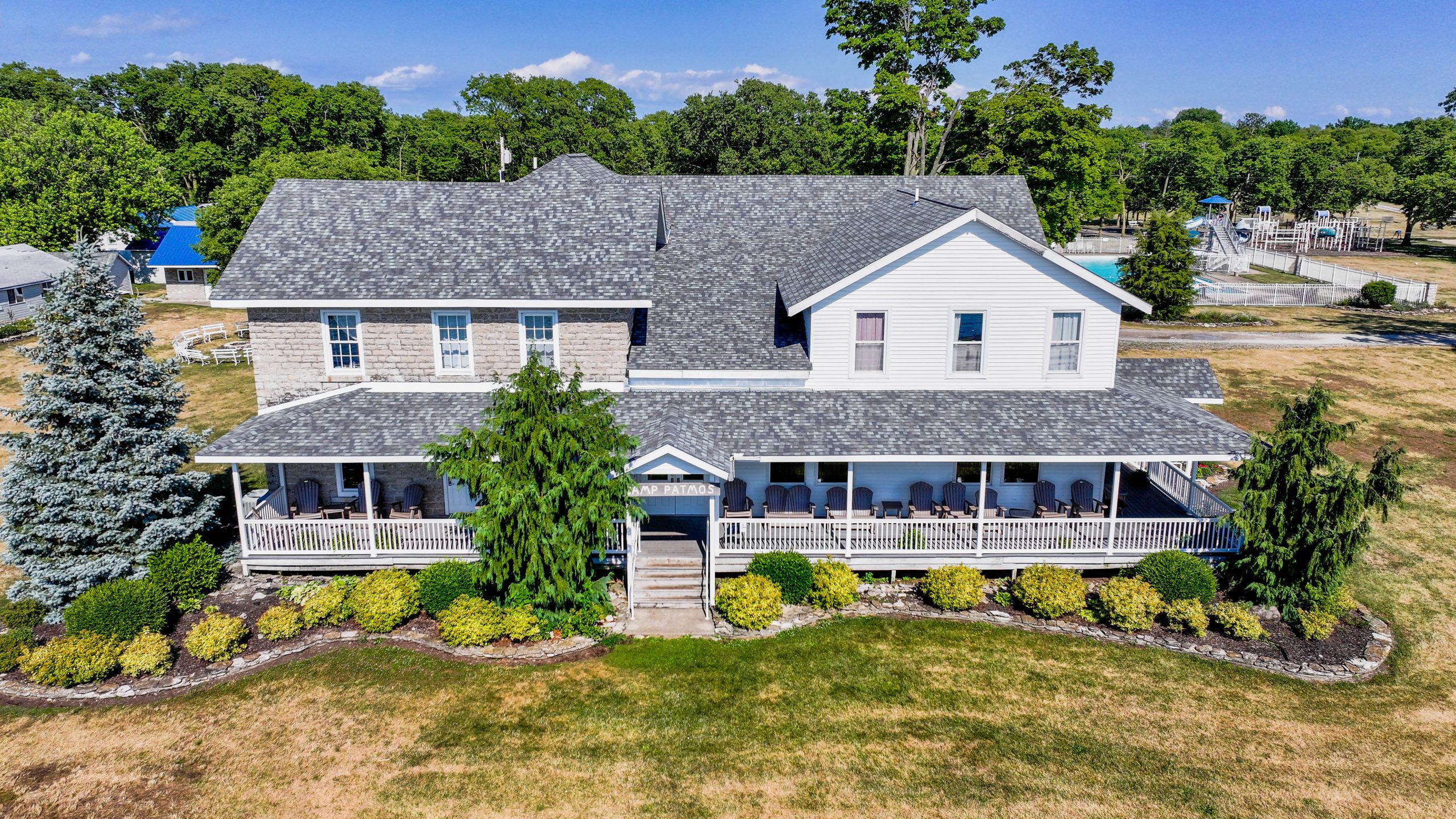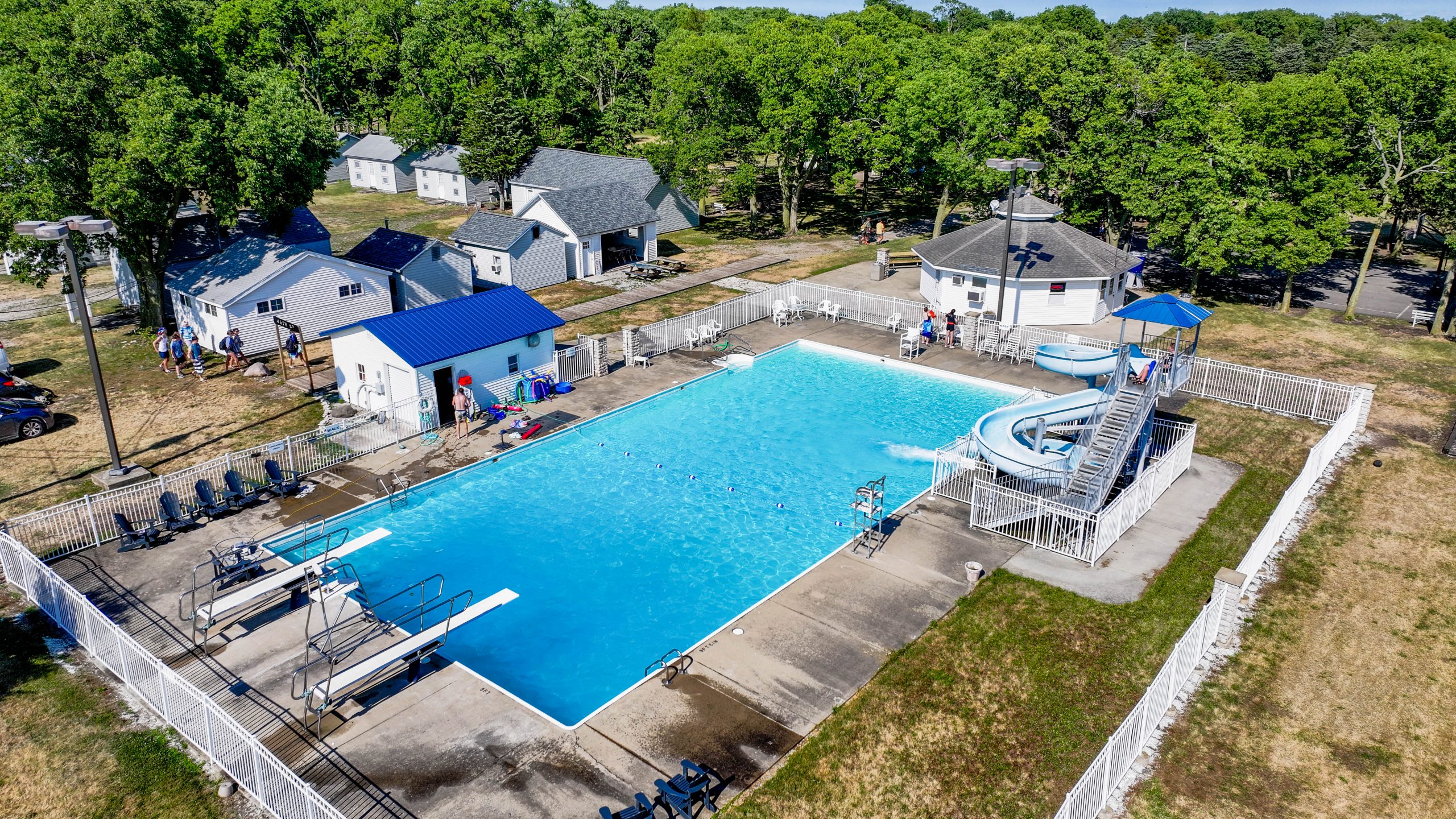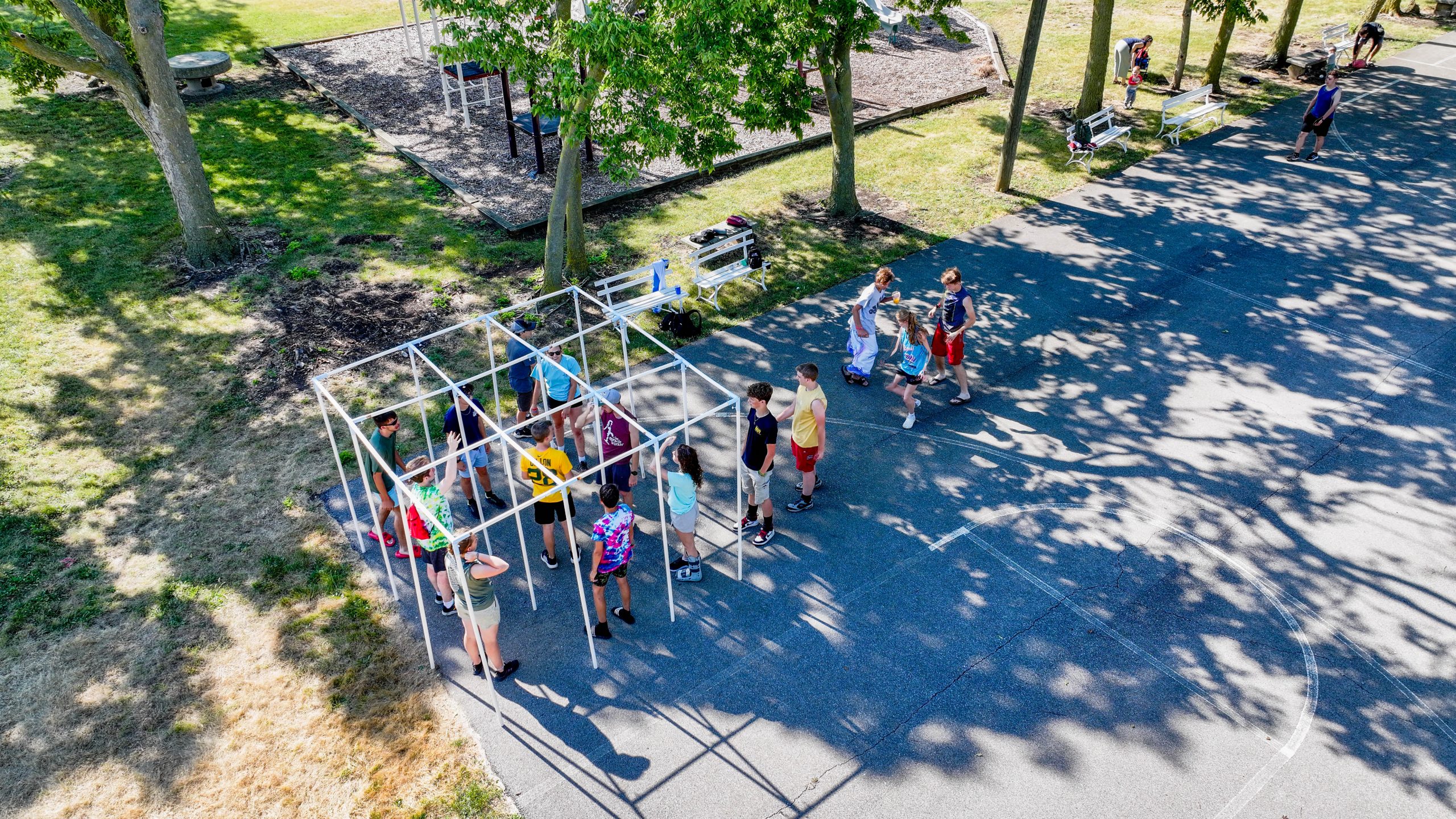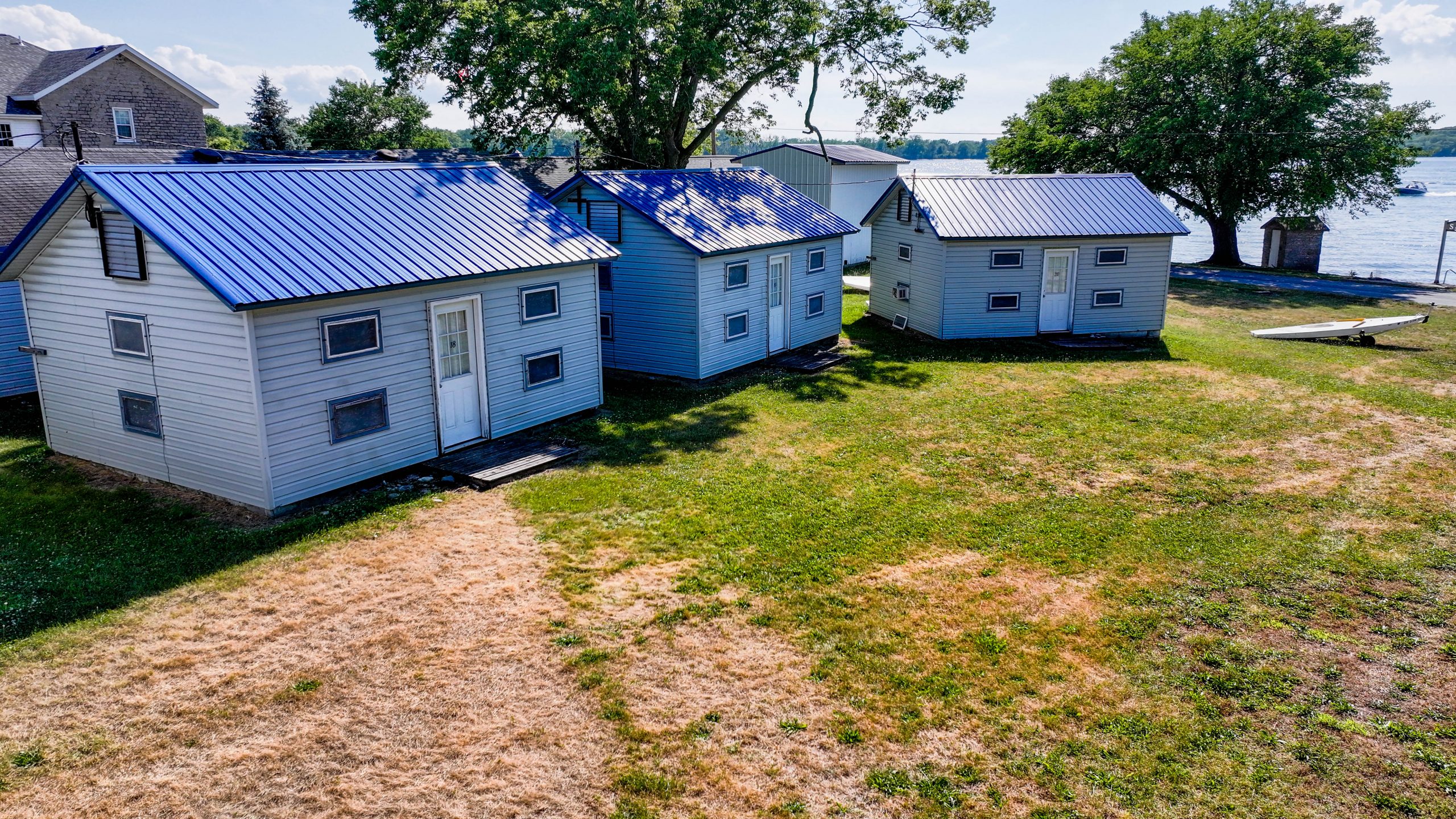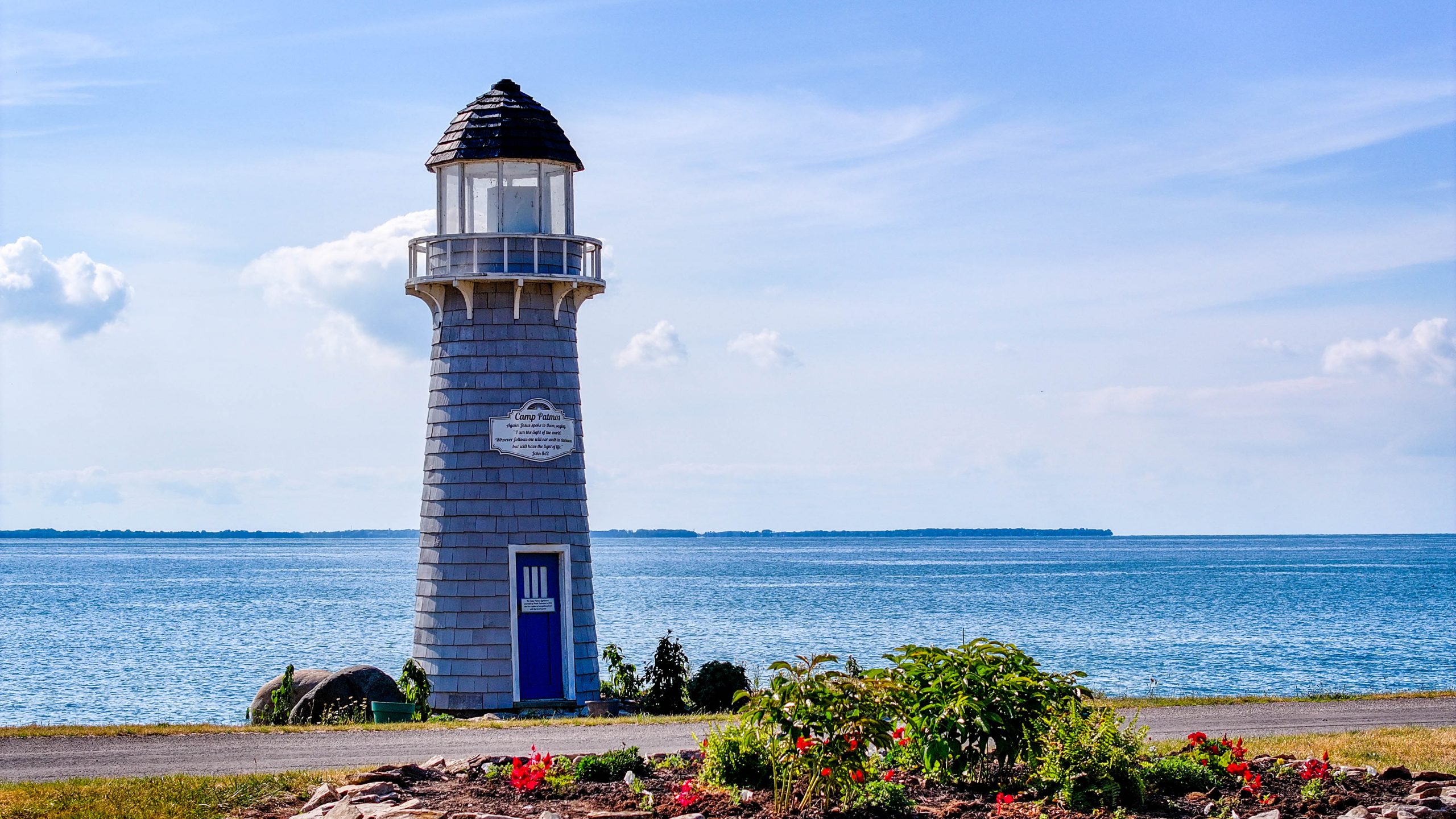History of camp patmos
The Camp Patmos Story
Camp Patmos is steeped in the rich history of Kelleys Island, originally called Cunningham Island and formed part of the Connecticut Land Grant. Starting in 1827, two brothers from Cleveland, Ohio, began purchasing parcels of the island. By 1830, they had acquired nearly all of it, solidifying their ownership in the years that followed.
Situated on Long Point, the camp occupies one of the island’s most scenic and serene locations. Long Point is a northern extension of Kelleys Island, with only a few homes along its length. To the east, there are distant views of Huron and Vermilion, Ohio, while the west offers glimpses of Middle Island and Pelee Island in Canada, along with the Bass Island chain. South Bass Island, home to the famous Oliver Hazard Perry Monument, is also nearby. Camp Patmos owns a significant portion of Long Point’s middle section, which stretches from the western to eastern shores, treating visitors to breathtaking views of both sunrises and sunsets.
The Hamilton home is one of Kelleys Island’s historic stone residences, reflecting architectural changes over time. Originally T-shaped, the stone façade faces the road, while the rear is wood-framed with beveled siding. The house has seen several alterations, including a rear frame addition, a flat-roofed front addition with a mansard-style shingled roof, an open front porch, and a large two-story stone dining hall added around 1930.
The original stone building was the homestead of Samuel and Eliza Hamilton, who were born in Tyrone, Ireland, in 1778 and 1782, respectively. Their son, James, also born in Tyrone in 1815, settled on Kelleys Island’s north bay in 1839, making him one of the first to purchase land from the Kelleys. Encouraged by his report, Samuel and Eliza moved to the island in 1851, acquiring land near the base of Long Point. Samuel was a farmer who grew corn and wheat, working the fields with oxen, and raising cows and pigs. After Samuel’s death, his son Robert took over the farm, focusing primarily on grape cultivation. By 1880, Robert’s vineyard was the island’s most productive, yielding one of the largest grape harvests and producing 2,500 gallons of wine that year.
In the 1920s, the house was occupied by James Selfe and his wife, Lydia Titus Self. James worked in the Kelleys Island Lime & Transport Company quarry and was also a photographer known for his panoramic island views. The Selfe family had originally come to the island from England via Pelee Island in 1873. After their father’s death, the family lived in a house on Robert Hamilton’s property. Tragedy struck in 1877 when James’s mother, Elizabeth Selfe, was mysteriously murdered, leading the Hamilton family to take in her children.
After James Selfe, the house was sold to Fr. Vaclav Chaloupka of Nativity B.V.M. Parish in Cleveland and transformed into a summer camp for parish children, particularly choir members and altar boys. The camp, called The Villa, was largely self-sufficient, and the parish maintained part of the former farm. During this time, an addition was built with materials salvaged from the Becker Winery, which had burned down in 1924. Four cabins were also constructed on the grounds.
In 1952, the camp was purchased by the Ohio Regular Baptist Home and Camp, Inc., which made several improvements. The Findley Memorial Chapel was built in 1959, a swimming pool was added in 1968, a miniature lighthouse went up in 1971, and by 1975, the camp had 11 cabins for girls and 9 for boys. Through a generous donation from the Morse family, the camp expanded its property to reach the eastern shore of Long Point. Since 1998, three quad cabins with restrooms, carpet, and air conditioning have been added. The Johnson Recreation Center, which includes activities like carpetball, ping-pong, and air hockey, was also built, along with an art studio. In 2001, the “Pophouse,” an octagonal building offering treats to campers, was erected. The camp’s waterfront facilities expanded in 2002 with Rogers Landing, a 200-foot pier for speedboats and water activities.
The dining hall has been remodeled to accommodate more overnight guests and to enhance the dining experience with views of Lake Erie. New restrooms, bedrooms, and a wrap-around porch have also been added to complement the historic beauty of the building.
Today, Camp Patmos can host up to 300 campers and 75 staff for week-long programs. Activities include sailing, wakeboarding, water skiing, tubing, putt-putt, low ropes, tandem biking, swimming, archery, volleyball, basketball, soccer, and other specialty offerings.
island Community Engagement at camp PAtmos
In a spirit of community, Camp Patmos opens its pool to Kelleys Island residents and their guests when camp sessions are between guest arrivals and departures. The camp’s staff, along with campers, often volunteers for community projects such as park beautification and island parades, further strengthening its bond with the island.
Our Gallery
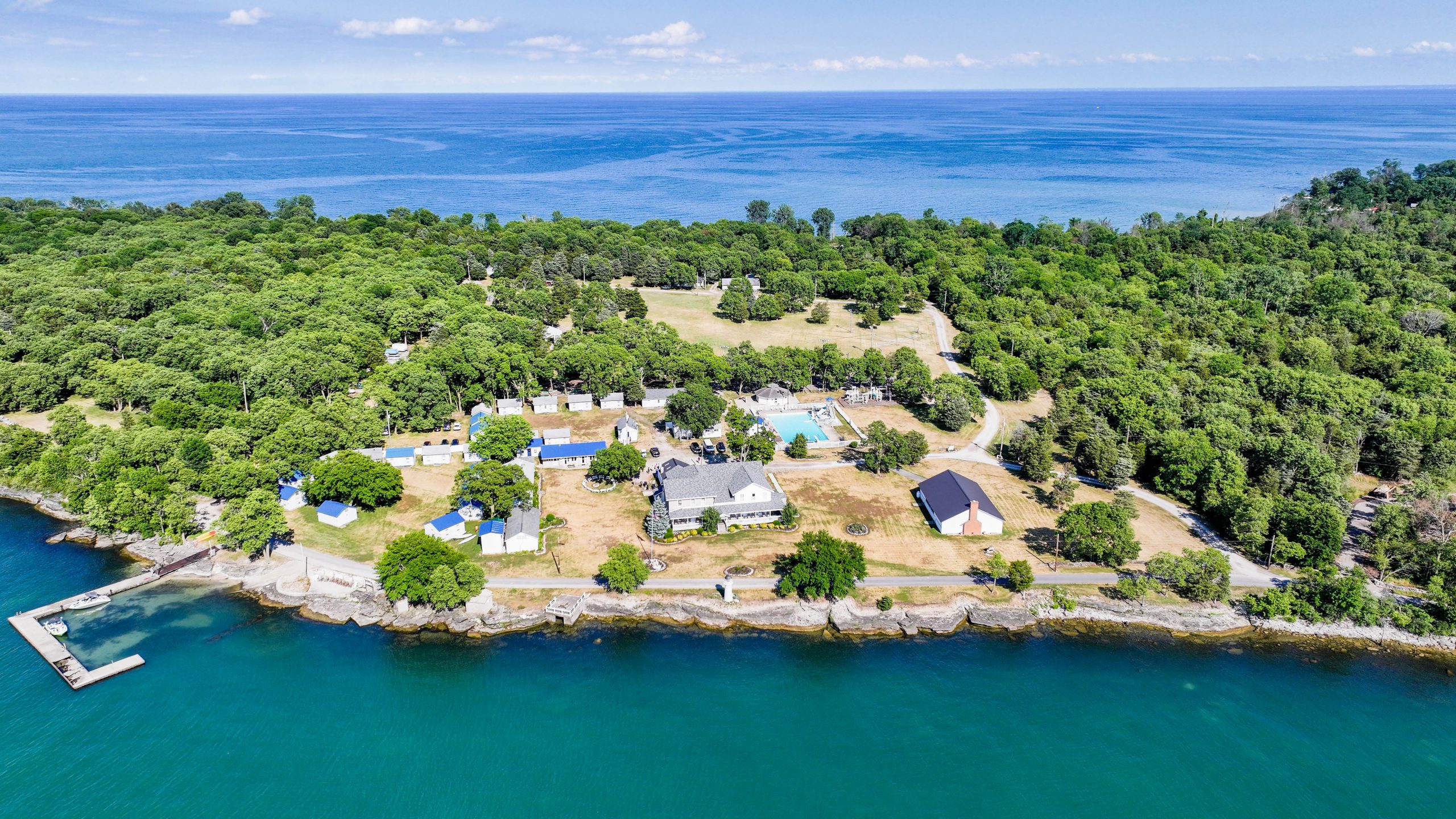
Join Our Newsletter
Hear all that God is doing through the ministry at Camp Patmos by signing up for our quarterly newsletters. Please sign up here!
By submitting this form, you are consenting to receive marketing emails from: . You can revoke your consent to receive emails at any time by using the SafeUnsubscribe® link, found at the bottom of every email. Emails are serviced by Constant Contact
More Information
Contact US
Phone
(419) 746 – 2214
camp@camppatmos.com
Address
920 Monaghan Road, Kelleys Island, OH 43438
Mailing Address
PO BOX 1920

